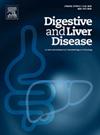随机对照试验中计算机辅助检测对腺瘤检出率影响的变异性:一项meta回归分析。
IF 4
3区 医学
Q1 GASTROENTEROLOGY & HEPATOLOGY
引用次数: 0
摘要
背景:计算机辅助检测系统(CADe)可提高结肠镜检查时腺瘤的检出率(ADR)。然而,在不同的随机对照试验中,CADe效应的不同结果值得研究影响这些结果的因素。目的:探讨可能影响cade辅助结肠镜检查效果的不同因素及其对不良反应的影响。方法:我们检索MEDLINE, EMBASE和Scopus数据库,直到2023年7月,以获取报告CADe系统在检测结直肠肿瘤中的性能的随机对照试验。主要结果为不良反应汇总。随机效应荟萃分析获得95%置信区间(CI)的合并风险比(RR)。为了探索异质性的来源,我们使用单变量和多变量混合效应模型进行了元回归分析。潜在的解释变量包括影响腺瘤患病率的因素,如患者性别、年龄和结肠镜检查适应症。我们还纳入了主要(ADR)和次要(停药时间)绩效指标作为结肠镜检查的质量指标。结果:纳入23项随机对照试验(RCTs), 19077例患者。CADe组不良反应发生率(46% [95% CI 39-52])高于标准结肠镜组(38% [95% CI 31-46]),风险比为1.22 (95% CI 1.14-1.29);异质性显著(I2 = 67.69%)。在单变量meta回归分析中,患者年龄、对照组不良反应(ADR)和停药时间是CADe对ADR影响的最强预测因子(P < 0.001)。在多变量meta回归中,对照组的ADR和停药时间同时是CADe效应对ADR影响比例的显著预测因子。结论:发现的大量异质性似乎与研究中结肠镜检查质量表现的变异性有关,即对照组的不良反应和停药时间。本文章由计算机程序翻译,如有差异,请以英文原文为准。
Variability in computer-aided detection effect on adenoma detection rate in randomized controlled trials: A meta-regression analysis
Background
Computer-aided detection (CADe) systems may increase adenoma detection rate (ADR) during colonoscopy. However, the variable results of CADe effects in different RCTs warrant investigation into factors influencing these results.
Aims
Investigate the different variables possibly affecting the impact of CADe-assisted colonoscopy and its effect on ADR.
Methods
We searched MEDLINE, EMBASE, and Scopus databases until July 2023 for RCTs reporting performance of CADe systems in the detection of colorectal neoplasia. The main outcome was pooled ADR. A random-effects meta-analysis was performed to obtain the pooled risk ratios (RR) with 95 % confidence intervals (CI)). To explore sources of heterogeneity, we conducted a meta-regression analysis using both univariable and multivariable mixed-effects models. Potential explanatory variables included factors influencing adenoma prevalence, such as patient gender, age, and colonoscopy indication. We also included both key (ADR), and minor (Withdrawal time) performance measures considered as quality indicators for colonoscopy.
Results
Twenty-three randomized controlled trials (RCTs) on 19,077 patients were include. ADR was higher in the CADe group (46 % [95 % CI 39-52]) than in the standard colonoscopy group (38 % [95 % CI 31-46]) with a risk ratio of 1.22 [95 % CI 1.14-1.29]); and a substantial level of heterogeneity (I2 = 67.69 %). In the univariable meta-regression analysis, patient age, ADR in control arms, and withdrawal time were the strongest predictors of CADe effect on ADR (P < .001). In multivariable meta-regression, ADR in control arms, and withdrawal time were simultaneous significant predictors of the proportion of the CADe effect on ADR.
Conclusion
The substantial level of heterogeneity found appeared to be associated with variability in colonoscopy quality performances across the studies, namely ADR in control arm, and withdrawal time.
求助全文
通过发布文献求助,成功后即可免费获取论文全文。
去求助
来源期刊

Digestive and Liver Disease
医学-胃肠肝病学
CiteScore
6.10
自引率
2.20%
发文量
632
审稿时长
19 days
期刊介绍:
Digestive and Liver Disease is an international journal of Gastroenterology and Hepatology. It is the official journal of Italian Association for the Study of the Liver (AISF); Italian Association for the Study of the Pancreas (AISP); Italian Association for Digestive Endoscopy (SIED); Italian Association for Hospital Gastroenterologists and Digestive Endoscopists (AIGO); Italian Society of Gastroenterology (SIGE); Italian Society of Pediatric Gastroenterology and Hepatology (SIGENP) and Italian Group for the Study of Inflammatory Bowel Disease (IG-IBD).
Digestive and Liver Disease publishes papers on basic and clinical research in the field of gastroenterology and hepatology.
Contributions consist of:
Original Papers
Correspondence to the Editor
Editorials, Reviews and Special Articles
Progress Reports
Image of the Month
Congress Proceedings
Symposia and Mini-symposia.
 求助内容:
求助内容: 应助结果提醒方式:
应助结果提醒方式:


